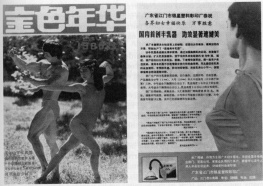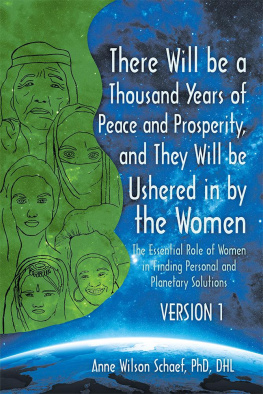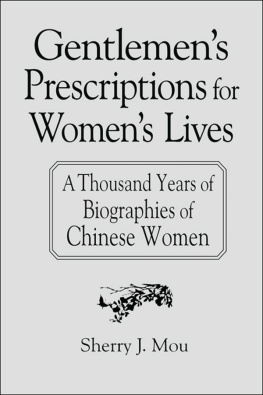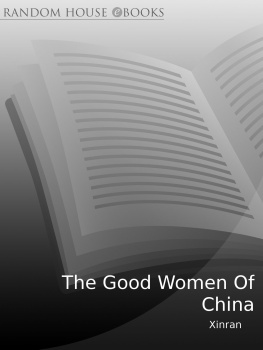
Personal Voices
Chinese Women In the 1980s
Emily Honig
Gail Hershatter
Stanford University Press
Stanford, California
1988 by the Board of Trustees of the Leland Stanford Junior University
Printed in the United States of America
9780804766319
CIP data appear at the end of the book
Acknowledgments
W HEN WE WENT TO CHINA to do research in the fall of 1979, we did not intend to write a book about contemporary women. One of us was studying the women cotton mill workers of pre-Liberation Shanghai; the other was investigating the growth of the working class in Tianjin. Most of our time was spent poring over archival documents and interviewing retired workers. Yet it was impossible to ignore the rapidly changing social environment of contemporary China, particularly as it affected women. Each of us shared a university dormitory room with a young Chinese woman. In talking with them and their female classmates we became aware that issues formerly considered privateadornment, courtship, marriage, divorcewere becoming topics of intense public discussion. We began to clip articles on these topics in the press, and watched as a full-fledged debate about gender roles unfolded in Chinese society. As we finished our dissertations, began teaching, and returned to China for periodic visits, the piles of clippings, womens magazines, and books by and for women grew.
In the past seven years many people prodded us to incorporate this material into an account of the lives of contemporary Chinese women. Foremost among those who helped shape this book are the women whose friendship allowed us our first close look at Chinese society: Li Biyu, Wang Yufeng, Zhao Xiaojian, Pan Hangjun, Zhou Guangyu, and Cora Deng. From Xue Suzhen we learned about the sociological investigations of women now being conducted by Chinese scholars. Su Hongjun was an inexhaustible source of clippings and critical commentary. We are profoundly grateful to all these women for sharing their observations, experiences, and opinions with us, though they may well not agree with our interpretations.
We are indebted to the colleagues and friends who read this book in whole or in part. Marilyn Young played midwife to the book and sometime therapist to its authors, giving every version of the manuscript as much consideration and care as if it had been her own. Christina Gilmartin pushed us to refine our analysis and helped us expurgate traces of Chinglish from the translations. Margery Wolf, to whom we owe a great intellectual debt for her pioneering books on Chinese women, helped us place our work in the larger context of social science research on China. Lisa Rofels careful reading made us more conscious of the dangers of our own ethnocentrism. Harold Kahn, who has read and edited every word that we have written as professional historians, gave us the benefit of his dependably incisive and eloquent comments. He was our toughest critic. Although we chose not to take some of his advice, the book is richer and more tightly written because he labored over it. Randall Stross did his best to clear the manuscript of bad grammar and sloppy thinking, all the while cheering us on. Carma Hinton provided a critical reading of the introduction and endless lore about growing up female in China. Michael L. Smith offered intriguing comparisons to the situation of women in United States history. Kay Ann Johnson helped us to refine our argument about the effects of the Cultural Revolution on women.
Several others made unique contributions to this project. Our research assistants, Lin Xiaoyun and Laipeng Rehfield, prepared draft translations of selected materials from the Chinese press. Weiguo Yu put in long hours clearing up questions of translation and interpretation. Gloria Rodriguez contributed essential childcare and Sarah Fang offered entertainment and distraction. Mary Beckman, Estelle Freedman, Susan Mann, and Christine Wong were crucial sources of moral support. Financial support and office space were provided by Williams College, Lafayette College, the Fairbank Center for East Asian Research at Harvard University, and the Center for Chinese Studies at the University of California, Berkeley. Muriel Bell, Senior Editor at Stanford University Press, encouraged us to finish the manuscript and took time out from her new duties to copyedit the result.
Finally, we would like to thank each other for the joys of coauthorship. This book is collaborative in every respect; the order of the authors names was decided by flipping a coin.
E.H.
G.H.
Table of Contents

Introduction
I T WAS THE LAST DAY of the exhibit, and the hall of the Shanghai Workers Cultural Palace was crowded. Groups of women and an occasional man hurried to view the pictures and captions depicting the Achievements of Shanghai Women, 19761986, even as workmen moved in to dismantle the display. The exhibit was an impressive testimony to the dedication and competence of women in many fields: science, agriculture, industry, education, athletics, and the arts.
Without ever making explicit comparisons to Chinas prerevolutionary past, the display made it clear just how much womens lives had changed in the twentieth century. No longer were womens roles limited, as they had been during the period of imperial rule, to domestic work, childbearing, household handicrafts, or prostitution. The options had widened considerably even since the Republican period (191149), when many women moved out of the home into industrial production, professions such as teaching, social work, and medicine, student activism, and politics. With the coming to power of the Communist Party in 1949, women were brought into the workforce in unprecedented numbers. They were also expected to participate fully in the political and social transformation of society. The results, we thought as we moved through the hall, were all around us: in the women of achievement portrayed on the walls, in the confident manner and lively conversations of the women spectators, and in the fact of the exhibit itselfa government-sponsored effort to promote public awareness of how much women had contributed to Chinas development.
Yet two aspects of the exhibit troubled us. First, an occasional display of statistical information indicated that the status of women was far from equal to that of men. Less than a quarter of the citys Communist Party members were women, a significant handicap in a nation where the Party makes policy and controls political life. Even more disturbing, in a society that has begun to emphasize education as the key to development, women were barely represented in the ranks of those currently studying for advanced degrees in Shanghai (50 of 410 Ph.D. students; 156 of 7,753 masters degree students).
Second, the exhibit conveyed a mixed message about the sexual division of labor. It showed women who were distinguished scientists, but at the same time suggested that women were by nature and training uniquely suited to tasks, such as the production of fine embroidered pieces, that tended to pay less than jobs performed by men. The exhibit focused on womens individual achievements outside the home, but it left unexamined the double burden of women who worked at both paid labor and the unpaid labor of housework and childrearing.
The public discourse on womens status in China is considerably more complicated than this exhibition suggested. Since the late 1970s, the press has carried lively discussions, and sometimes acrimonious debates, about everything from female adornment to the role of women in the workforce. These discussions are not confined to the pages of newspapers and magazines; they permeate private conversation and visibly affect public behavior, especially in Chinas cities. Not since the May Fourth Movement of 1919, when iconoclastic students challenged Confucian norms for women, has gender been so visible as a subject of controversy and a category of analysis.
Next page







